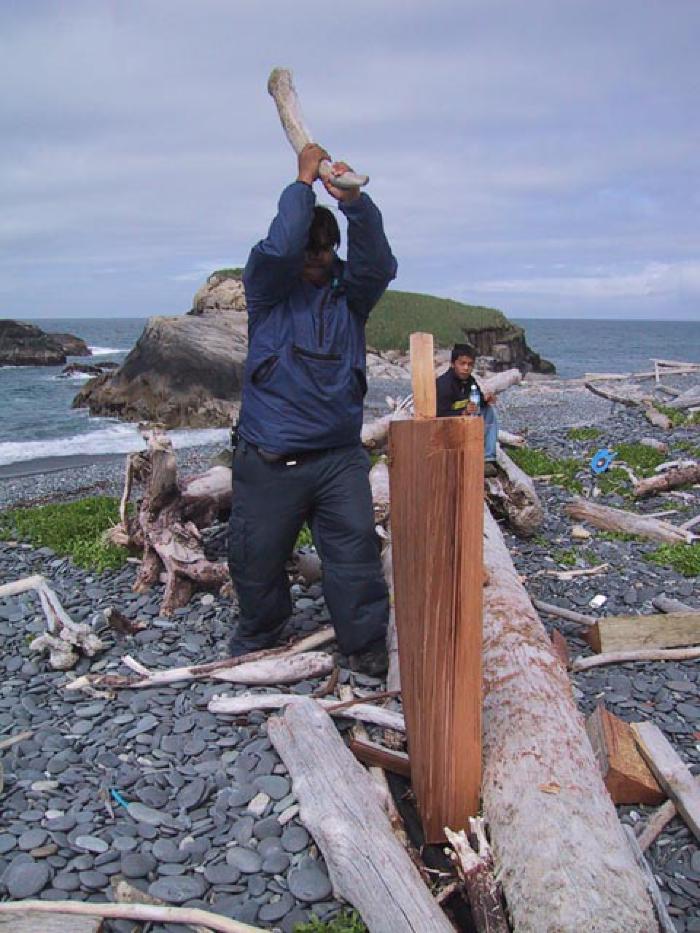Red Cedar — Qar’usiq

Two varieties of cedar are indigenous to coastal Alaska, the yellow cedar or Alaska cypress (Camaecyparis nootkatensis) and the western red cedar (Thuja plicata). Both are large evergreen trees with fibrous bark and straight-grained, rot-resistant wood. Named for the color of their heartwood, in western North America, cedar trees grow primarily in the forests of southeast Alaska and British Columbia. Cedar has long been an essential resource to the Native societies of these regions. Although cedar does not grow around Kodiak, it was widely used by Alutiiq people, who collected it as driftwood.
Today, Alutiiq people use cedar primarily for firewood, because it burns cleanly. In the past, however, cedar was a coveted building and carving material. Cedar resists water more readily than spruce, so it was used to create objects that came in contact with moisture: houses, boats, hats, paddles and oars, hunting equipment, cooking utensils, and grave markers. Builders preferred to use cedar as the foundation logs and roof posts for sod houses, and in the historic era, they split roofing shingles from cedar.
Alutiiq people also used cedar in boat construction. Although red cedar is not a strong wood, it could be employed in any part of the kayak frame. It was a common choice for bow pieces. Where possible, craftsmen cut the curved prow of the kayak from a cedar stump, using the natural arc of wood formed by the tree trunk and its roots. To create kayak ribs and stringers, they soaked strips of cedar in hot water and bent them to shape.
